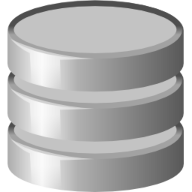send
A file sharing experiment which allows you to send encrypted files to other users.
Browse our large and growing catalog of applications to run in your Unraid server.
A file sharing experiment which allows you to send encrypted files to other users.

SerpBear is an Open Source Search Engine Position Tracking App. It allows you to track your website's keyword positions in Google and get notified of their positions. Required: A 3rd party Scraping account or a proxy ips to scrape Google Search Result. You can get an free API key from either ScrapingAnt (10k/month free) or ScrapingRobot (5k/month free) or SpaceSerp (15k/month for one-time payment of $59). https://docs.serpbear.com/getting-started Environment Variables https://docs.serpbear.com/miscellaneous/environment-variables To add the Search Console you have to follow this guide: https://docs.serpbear.com/miscellaneous/integrate-google-search-console You will have to add 2 variables to the template. SEARCH_CONSOLE_PRIVATE_KEY and SEARCH_CONSOLE_CLIENT_EMAIL
Cloud, Network Services• Web, Productivity, Tools / Utilities• Utilities
Expose local servers to the internet via SSH tunneling.

Easy to use SFTP (SSH File Transfer Protocol) server with OpenSSH and Fail2ban installed for extra hardening against brute force attacks. Forked from atmoz/sftp. Based on phusion/baseimage. Shared Path is an example. You must replace host path with path to a folder to share AND change user in the container path to the name of a user account configured in users.conf. See dockerhub or github page for more info.
A self-hosted and PHP-based URL shortener application with CLI and REST interfaces. More Variables: https://shlink.io/documentation/install-docker-image/#supported-env-vars
A ReactJS-based progressive web application for shlink. 1. Install shlink 2. CLI to it and enter "shlink api-key:generate" 3. Copy the api and add and edit to servers.json
URL Shortener in python based on flask
SignServer CE: Open source, PKI-based signing software to sign code, documents, timestamps and more. Unofficial Community Application not endorsed or maintained by SignServer or KeyFactor. For additional details see the following URL: https://hub.docker.com/r/keyfactor/signserver-ce/

A self-hosted, cross-platform service to sign and install iOS apps, all without a computer. You must have a reverse proxy to access the webUI. Configuration of the yml can be found on the github.

Simple mover addon, mainly considered for Media Files to keep on cache. NO replacement for regular mover or mover tuning, actually mover tuning is mandatory for exclusion
Media Servers• Music, Productivity, Tools / Utilities• Utilities
SinusBot is a MusicBot that will let you listen to music together with your friends on either TeamSpeak 3 or Discord. But it doesn't stop there - there's a lot of user-made scripts that can let SinusBot manage your Server and enhance the experience of your users in several ways. You and your friends can control the bot either through the included web interface or via commands through TeamSpeak 3 or Discord. Login User: admin Password: (your password from WEB UI Password)
A self-hosted image sharing platform built with Symfony and SvelteKit️.

Network Services• Management, Productivity, Tools / Utilities• Utilities
Snipe-it(https://github.com/snipe/snipe-it) makes asset management easy. It was built by people solving real-world IT and asset management problems, and a solid UX has always been a top priority. Straightforward design and bulk actions mean getting things done faster.

This is a FOSS project for asset management in IT Operations. Knowing who has which laptop, when it was purchased in order to depreciate it correctly, handling software licenses, etc. It is built on Laravel 5.5. Snipe-IT is actively developed and we release quite frequently. (Check out the live demo here.) This is web-based software. This means there is no executable file (aka no .exe files), and it must be run on a web server and accessed through a web browser. It runs on any Mac OSX, flavor of Linux, as well as Windows, and we have a Docker image available if that's what you're into.
Snippet Box is a simple self-hosted app for organizing your code snippets. It allows you to easily create, edit, browse and manage your snippets in various languages.
Backup, Cloud, Other, Productivity, Tools / Utilities• Utilities
The mighty, self-hostable Git server for the command line
Solr is the popular, blazing-fast, open source enterprise search platform built on Apache Lucene.
SonarQube is an open source platform for continuous inspection of code quality. By default, the image will use an embedded H2 database that is not suited for production. You can set up a database by following the "Installing the Database" section of https://docs.sonarqube.org/latest/setup/install-server/ (Requires seperate DB to be installed and linked)
Backup, Cloud, Other, Productivity, Tools / Utilities• Utilities
SOSSE (Selenium Open Source Search Engine) is a web archiving software, crawler, and search engine
Backup, Cloud, Network Services• Web, Productivity, Tools / Utilities• Utilities
Sourcegraph docker image.
speaches is an OpenAI API-compatible server supporting streaming transcription, translation, and speech generation. Speach-to-Text is powered by faster-whisper and for Text-to-Speech piper and Kokoro are used. This project aims to be Ollama, but for TTS/STT models. **Nvidia GPU Use:** Using the Unraid Nvidia Plugin to install a version of Unraid with the Nvidia Drivers installed and add **--runtime=nvidia --gpus=all** to "extra parameters" (switch on advanced view)
Home Automation, Other, Productivity, Tools / Utilities• Utilities, AI
A fast and local speech-to-text system that is personalized with your Home Assistant device and area names.

Network Services• Management, Other, Tools / Utilities• Utilities
This tool will continuosly run Speedtests at the chosen interval and export the data to InfluxDB. What makes this different is that it's using the Ookla CLI tool which provides some expanded details that you can use to tag your Influx Data. An example of the dashboard I made in Grafana can be found at https://grafana.com/grafana/dashboards/13053. strong This container only includes the scripts to run the speedtests and export to Influx. InfluxDB must be installed seperatly. I welcome feedback or additional improvements. Please open an issue on the project page. /strong

An application for launching HTML5 Network Speed Test Server. You can test download & upload speed from any device within your network with a web browser that is IE10 or new. Create Your Own HTML5 Network SpeedTest Server? 1) Install App 2) Now open your browser and direct it to: A: For HTTP use: http://YOUR--UNRAID-SERVER-IP:3000 B: For HTTPS use: https://YOUR-UNRAID-SERVER-IP:3001 How to use OpenSpeedTest Network Speed Test Server? You need two devices in between your WiFi router. Run OpenSpeedTest Server App on one device and connect directly to your router, if it's a wireless device, put it within 1.5 meters. Navigate to the URL shown in OpenSpeedTest Server App from the second device. Now you can test download and upload speed from other devices on your network to the device with OpenSpeedTest-Server. Important Info : - Use the Fastest Device Available with you for Server. - Use 5Ghz WiFi Band for Maximum Performance. - Do not minimize this Application or run in background. When you run a speed test. Are you experiencing slow internet usage? Endless buffering? Probably due to a congested wifi channel. You may need to change your WiFi router location or adjust your router settings. OpenSpeedTest-Server is here to help you to improve your internet experience. Test Your WiFi (Wireless) or Ethernet Connection (Wired Connection) and Fix your local network before pointing fingers towards your ISP for a slow and sluggish internet experience. Introducing HTML5 Network Speed Test Server for Android, iOS, Windows, Mac & Linux!. For Headless/large-scale deployments, Docker image and Source Code are available. Why do you need to Create Your Own SpeedTest Server? You can run OpenSpeedTest Server in your Home Lab, Office Server or Cloud Server. So that you or employees who work from home can run a speed test to your office and make sure they can run everything smoothly. Choosing between ISP1 & ISP2. Sometimes your ISP2 is Faster than ISP1 when you test your speed on popular speed test sites. But when you connect to your Home/Office/Cloud, that slower connection may perform better. The only way to find out is to run a speed test against your infrastructure. Troubleshooting network issues. It is common even when your Internet connection is working fine, but some of the devices in your network may experience trouble getting decent connectivity to the internet. The issue might be the wrong VLAN ID or Faulty Switch. If you run a Local network speed test, you can find and fix these issues easily. Before you add a repeater. Most repeaters will reduce your network speed by 50%, so if you put it far away, it will perform worse, and if you put it too close, you will not get enough coverage if you run a Local Network speed test. Depending on the application requirements, you can decide exactly where you need to put your repeater. Browsing experience. Many useful browser extensions are out there that we all know and love. But some of them are really slowing you down for a few seconds per page you visit. You may see good performance when you test your network performance via File Transfer or Command-line utilities, but you may experience poor performance when browsing the internet. This is due to a bad browser configuration that includes unwanted extensions installed. From my experience, only keep the one you are going to use every single day. Extensions that you may use once in a while should be removed or disabled for maximum performance. If you see poor performance, try OpenSpeedTest from Private Window or Incognito Window. This tool can be used to check the browser performance and impact of Extensions on your browsing experience. No client-side software or plugin is required. You can run a network speed test from any device with a web browser that is IE10 or newer.
This program runs a speedtest check every hour and graphs the results. The back-end is written in Laravel and the front-end uses React. It uses the speedtest-cli package to get the data and uses Chart.js to plot the results.
This is a Dockerfile for Splunk designed for OpenShift and unRAID based on Alpine Linux - https://www.splunk.com If you run the Dockerfile with no arguments you will get a single instance of Splunk 9.0.3 with the user admin:changeme2019. The web interface is exposed on port HTTP/8000, data ingest on TCP/9997, and API on HTTPS/8089. Compatible with Splunk 7.1.0 and newer.

Keep track of your inventory of 3D-printer filament spools. Spoolman is a web service that helps you keep track of your filament spools and how they are being used. It acts as a database, where other printer software such as Octoprint and Moonraker can interact with to have a centralized place for spool information. For example, if used together with Moonraker, your spool weight will automatically be reduced as your print is progressing. For more container variables visit the official github repo https://github.com/Donkie/Spoolman#using-docker

DB Browser for SQLite(https://sqlitebrowser.org/) is a high quality, visual, open source tool to create, design, and edit database files compatible with SQLite.

Network Services• Management, Productivity, Tools / Utilities• Utilities
It's MS SQL Server... on Linux... who would have thunk it?!? Uses Official images for Microsoft SQL Server based on Ubuntu @ https://hub.docker.com/_/microsoft-mssql-server/ Database Storage Path: SQL Server data storage, defaults to cache drives for best performance. TCP Access Port - SQL Server TCP port, defaults to 1433. Accept End-User License Agreement - End-user License Agreement, REQUIRED. Sysadmin Password - SQL Server Sysadmin (sa) password, defaults to ChangeMe! if not changed.

Network Services• Management, Productivity, Tools / Utilities• Utilities
It's MS SQL Server... on Linux... who would have thunk it?!? Uses Official images for Microsoft SQL Server based on Ubuntu @ https://hub.docker.com/_/microsoft-mssql-server/ Database Storage Path: SQL Server data storage, defaults to cache drives for best performance. TCP Access Port - SQL Server TCP port, defaults to 1433. Accept End-User License Agreement - End-user License Agreement, REQUIRED. Sysadmin Password - SQL Server Sysadmin (sa) password, defaults to ChangeMe! if not changed.